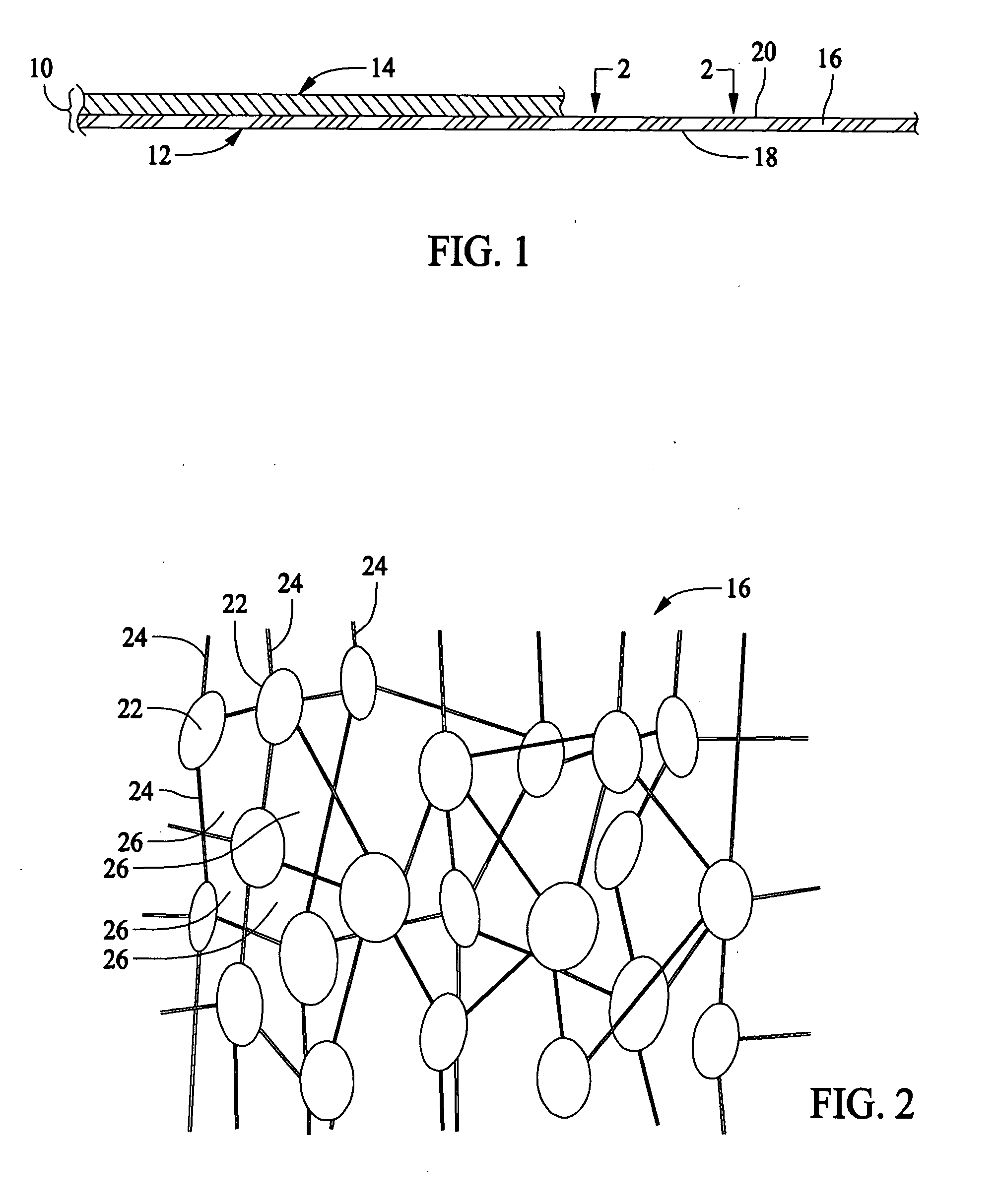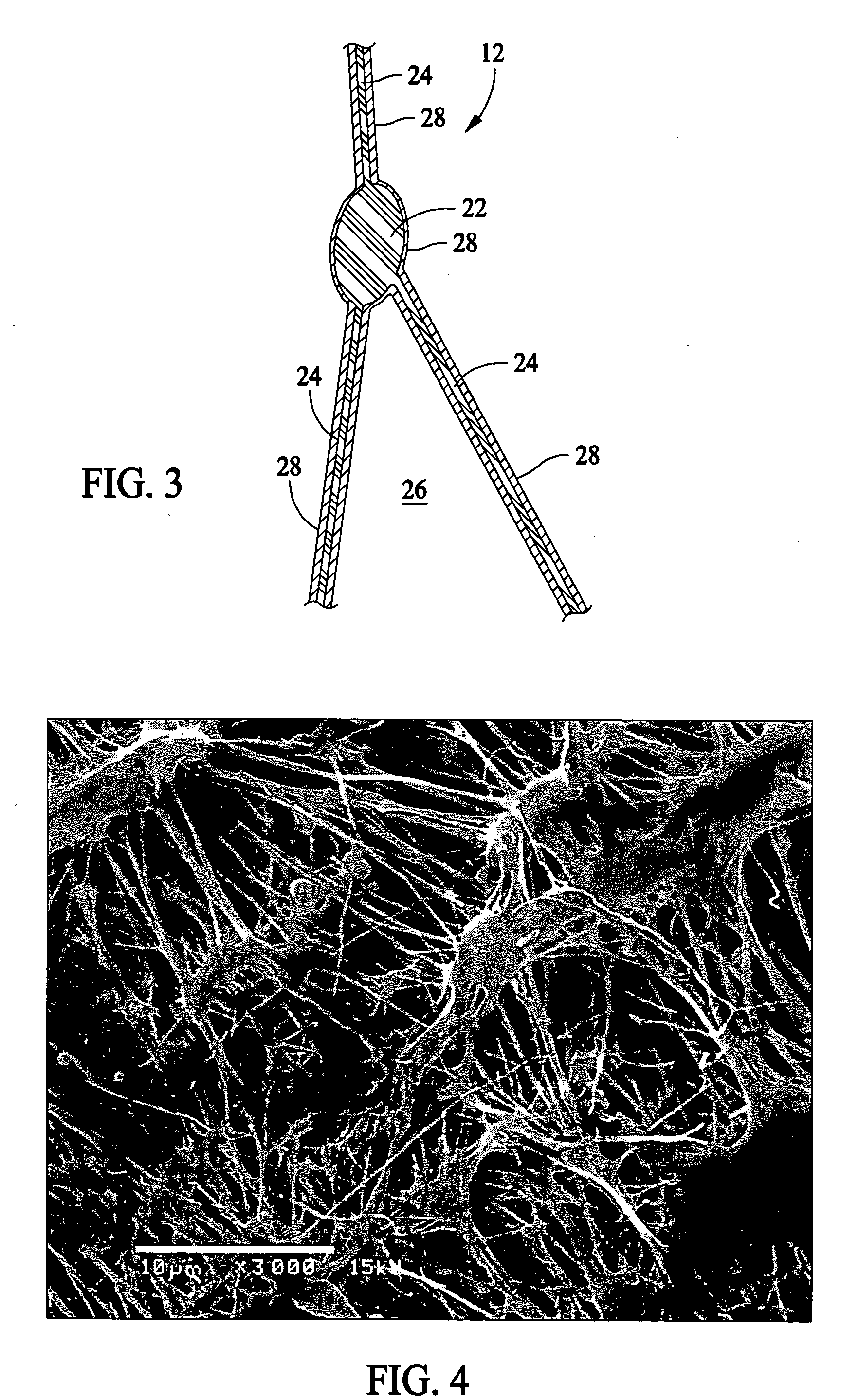Composite article having hydrophilic properties and method of manufacture
a technology of hydrophilic properties and composite articles, applied in the field of composite articles, can solve the problems of affecting the water-wettability of the fluoropolymer membrane, unable to easily filter water through the filter made from these fluoropolymers, and unable to achieve the effect of reducing the water-wettability of the membran
- Summary
- Abstract
- Description
- Claims
- Application Information
AI Technical Summary
Problems solved by technology
Method used
Image
Examples
treatment example 1
[0055] The membrane described above was laminated with a polypropylene material and treated with a diluted and activated dispersion of ECM / D6455 to form a composite article. Specifically, a organofunctional siloxane solids dispersion (ECM / D6455, a mixture of about 100% acetone by volume with about 6% organofunctional siloxane solids) was mixed with a hydrophilic activator and IPA to form a coating composition having 1.5 wt % organofunctional siloxane solids.
[0056] The composite article was heated to about 200° F. for about 8 minutes to coalesce the solids onto the nodes and fibrils of the treated membrane. Most of the pores in the treated membrane were not “blinded” or closed off. The air permeability after treatment of the composite article was 0.29 CFM per square foot of the composite article. Water permeability of the composite article was then tested at a pressure of about 27 inches of mercury vacuum. FIG. 6 is a graph illustrating water permeability of the composite article th...
treatment example 2
[0057] The membrane described above was laminated with a polypropylene material and treated with a diluted and stabilized dispersion of ECM / D6453 to form a composite article. Specifically, a organofunctional siloxane solids dispersion (ECM / D6453, a mixture of about 100% IPA by volume with about 6% organofunctional siloxane solids) was mixed with a hydrophilic activator and IPA to form a coating composition having 1.5 wt % organofunctional siloxane solids.
[0058] The composite article was heated to about 200° F. for about 8 minutes to coalesce the solids onto the nodes and fibrils of the treated membrane. Most of the pores in the treated membrane were not “blinded” or closed off. The air permeability after treatment of the composite article was 0.29 CFM per square foot of the composite article. Water permeability of the composite article was then tested at a pressure of about 27 inches of mercury vacuum. FIG. 6 is a graph illustrating water permeability of the composite article throu...
PUM
| Property | Measurement | Unit |
|---|---|---|
| surface tension | aaaaa | aaaaa |
| temperature | aaaaa | aaaaa |
| temperature | aaaaa | aaaaa |
Abstract
Description
Claims
Application Information
 Login to View More
Login to View More - R&D
- Intellectual Property
- Life Sciences
- Materials
- Tech Scout
- Unparalleled Data Quality
- Higher Quality Content
- 60% Fewer Hallucinations
Browse by: Latest US Patents, China's latest patents, Technical Efficacy Thesaurus, Application Domain, Technology Topic, Popular Technical Reports.
© 2025 PatSnap. All rights reserved.Legal|Privacy policy|Modern Slavery Act Transparency Statement|Sitemap|About US| Contact US: help@patsnap.com



